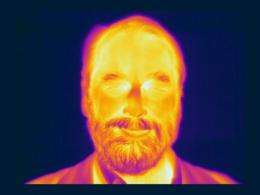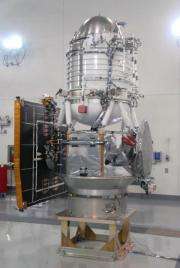NASA's WISE infrared satellite to reveal new galaxies, stars, asteroids

(PhysOrg.com) -- Data from the satellite, says principal investigator and UCLA professor Edward Wright, will help scientists answer fundamental questions about the history of our solar system, the Milky Way and the univese.
An unmanned NASA satellite will soon survey the entire sky to discover millions of uncharted stars and galaxies, asteroids, and planetary "construction zones," providing valuable new information on our solar system, the Milky Way and the universe.
NASA'S Wide-field Infrared Survey Explorer (WISE), scheduled to launch from California's Vandenberg Air Force Base on Dec. 9 or shortly after, will map the sky at four infrared wavelengths — invisible to the unaided human eye — with a sensitivity hundreds of times greater than its predecessors. WISE will catalogue hundreds of millions of objects.
"WISE will survey a large part of the universe that has never been surveyed before," said WISE's principal investigator, Edward L. (Ned) Wright, a UCLA professor of physics and astronomy who holds the university's David Saxon Presidential Chair in Physics. "I expect that what we find will be amazing. There is still so much we don't know. The most exciting discovery probably will be something we don't even realize is out there."
WISE may find elusive brown dwarf stars that are perhaps closer to the sun than even our nearest known neighbor, Proxima Centauri, which is four light-years away. The coldest stars, brown dwarfs are the missing link between giant gas planets like Jupiter and small, low-mass stars; they are roughly the size of Jupiter but with a much larger mass. Brown dwarfs can be detected best in the infrared, but even within the infrared, finding them can be very difficult.
In contrast to a star like our sun, which burns hydrogen into helium in a nuclear fusion reaction in its core, brown dwarfs gradually cool off without that source of energy. The age of a brown dwarf is calculated by comparing its temperature to its mass.
"We should find several hundred brown dwarfs that are currently unknown," said Wright, who often teaches UCLA undergraduate and graduate cosmology courses. "Many brown dwarfs are too cool to be detected with visible light. WISE will see most of them. It would be quite exciting to know how many brown dwarfs there are and how old they are. We expect to learn new information about how stars form within the Milky Way and the history of star formation.
"We know that many stars have planets," he added. "Follow-up observations with large telescopes like the future James Webb Space Telescope could well find large planets around the brown dwarfs discovered by WISE."

"Brown dwarfs are lurking all around us," said Peter Eisenhardt, the WISE project scientist at NASA's Jet Propulsion Laboratory in Pasadena, Calif. "We believe there are about as many brown dwarfs as stars in the universe, but we haven't found them yet because we haven't looked everywhere in the infrared the way WISE will."
Like a powerful set of night-vision goggles, WISE will survey the cosmos with infrared detectors about 300 times more sensitive than those used in previous survey missions. Wright said that 99 percent of the sky has not been observed yet with the kind of sensitivity that WISE has.
About 10 feet tall and weighing more than 1,400 pounds, WISE will orbit the Earth over the poles, about 325 miles above the surface, and will operate for at least seven months, with data expected four times a day. NASA's JPL will manage the mission, with the JPL's William Irace serving as project manager.
WISE will also detect swirling disks — the remains of planet formation around stars. Wright expects to see at least thousands of proto-planetary discs around stars, presumably condensing into planetary systems.
"That will be an important aspect of what WISE will do," Wright said. "We will be able to study the interstellar dust clouds in our Milky Way and produce spectacular images of how the dust is distributed around the Milky Way. We will be able to see many in the Milky Way galaxy, and we will be able to study star-forming regions in nearby galaxies and star formation in distant galaxies."
Galaxies in the distant, or early, universe were much brighter and dustier than our Milky Way. Their dusty coats light up in infrared wavelengths.
WISE will find colliding galaxies that emit more light, specifically infrared light, than any other galaxies in the universe, Wright said. Much of galaxy formation occurs when galaxies collide, producing an enormous burst of star formation and very bright infrared sources, he said.
WISE is expected to produce more than 1 million images, from which hundreds of millions of space objects will be catalogued.
As principal investigator, Wright led the team that proposed the mission in 1998, and he oversaw the design of the satellite and the WISE budget.
The WISE data will help answer fundamental questions about how solar systems and galaxies form.
"WISE will create a legacy that endures for decades," Eisenhardt said.
Wright seems not to mind that he will be working long hours over the holidays.
"The Christmas present I want this year," Wright said, "is WISE data."
Provided by University of California Los Angeles (news : web)



















